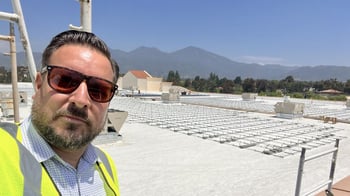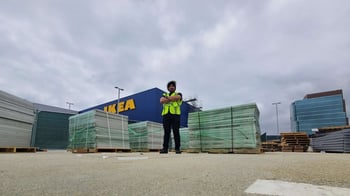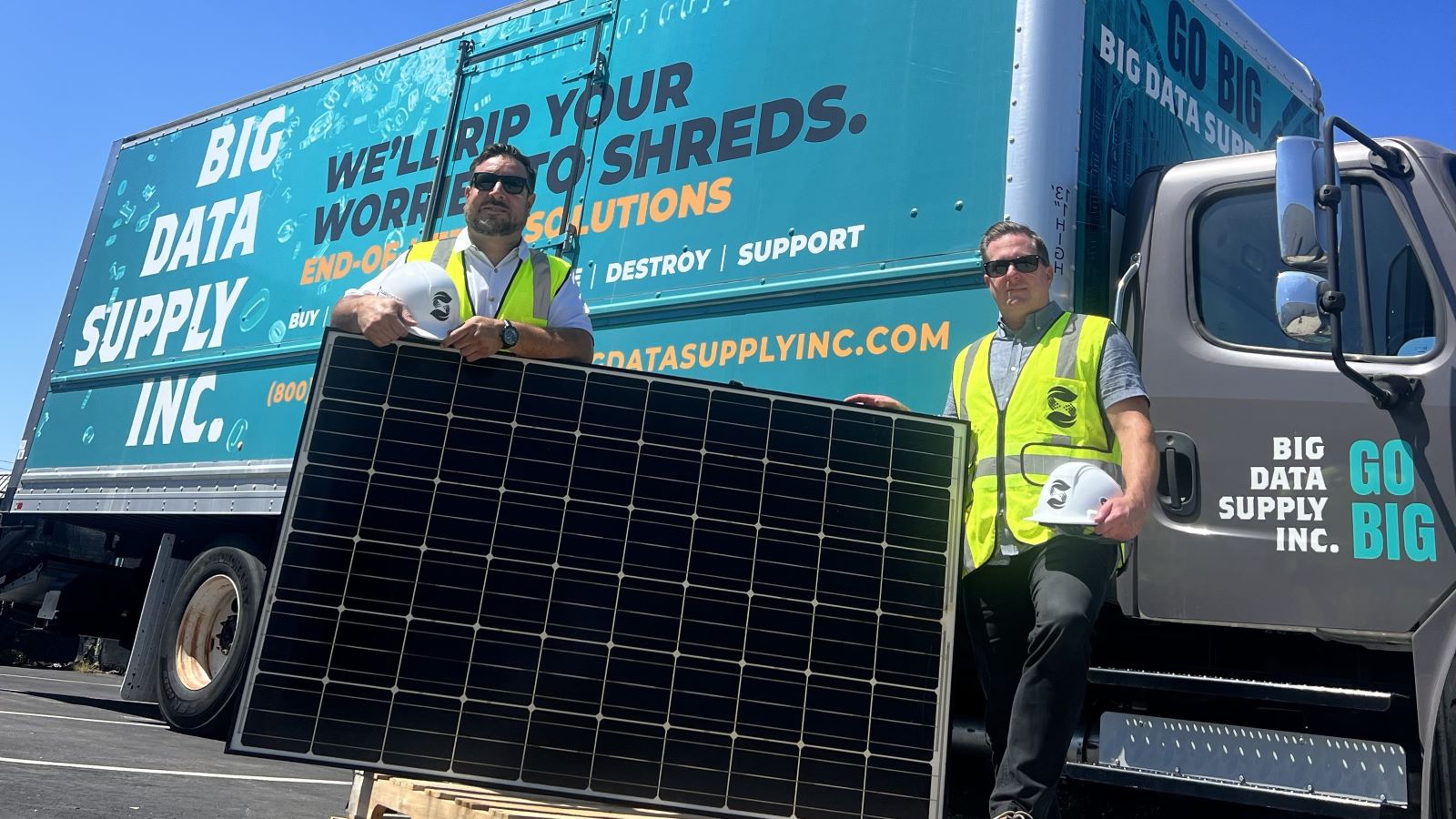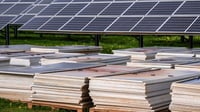The solar industry has the potential to become the leading source of energy in the world within 20 years. It’s also likely to produce ‘mountains of waste’. By 2050, up to 78 million metric tons of solar panels will have reached their end-of-life resulting in an annual 6 million metric tons of global waste, states the International Renewable Energy Agency.
Yet, some view the ‘mountains of waste’ as gold mines. Both governments and private investors are seeing the economic potential of PV reuse and recycling markets. China is implementing nationwide recycling standards for solar panels and wind turbines. France is home to a silicon recovery enterprise that expects to repurpose 300,000 tons of ultra-pure silicon by 2050. Investors in Japan have formed a joint partnership to provide reuse and recycling services for a forecasted 800,000 tons of solar panels expected to retire annually starting in the mid-2030s.
In the United States, a movement to extend the useful life of solar products and projects to improve industry sustainability is underway. NREL expects the U.S. to be one of the world's top benefactors of the global PV recycling business. Anticipated PV waste in 2030 could generate $60 million in raw material recovery. By 2050, the U.S. could profit $2 billion.
These announcements have led to more and more companies entering the market to provide reuse and recycling solutions. Certainly, they are driven by economic potential and are putting measures in place to ensure lucrative business models for the years ahead. But they’re also driven by a vision to create a sustainable circular economy. The vision encompasses reuse of still-functional PV products, responsible recycling, and zero waste.
“For components that have truly reached the end of their useful life and cannot be effectively reused, we who work in the industry must ensure responsible recycling,” states Brian Musil, owner (and entrepreneur extraordinaire) of SolarRecycling.com. “This involves disassembling the components to recover valuable materials such as metals, glass, and semiconductor materials. To accomplish zero waste, we must collaborate with specialized recycling partners who follow environmentally sound recycling processes.”
SolarRecycling.com launched in 2019 and is based in Santa Ana, California. It is the sister company to Big Data Supply, a global enterprise specializing in end-of-life data storage. The company joined EnergyBin in 2022. We chatted with Brian to learn more about how his company provides reuse and recycling solutions.
EB: You have a world-class IT hardware company (Big Data Supply) that's performing exceptionally well these days. What motivated you to expand into the solar industry by launching SolarRecycling.com?
Celebrating my 20th year in the IT asset disposition industry, Big Data Supply itself is an evolution from exclusively recycling data tape media to now being an R2v3 certified recycling company completing full data center decommissions worldwide.
I’m always closely following recycling industry trends and being a longtime BrokerBin member as well as seeing the birth of EnergyBin helped to push those ideas forward. My company is always evolving; I have a ‘grow or die’ mentality. I see a long-term outlook that will involve not only Solar, but EV recycling as well.
My vision for Solar Recycling is to one day become its own standalone company separate from Big Data Supply with its own dedicated employees and locations in strategic regions throughout the US.
EB: Your goal at SolarRecycling.com is to "eliminate waste and expense through Zero Net Waste and Zero Net Cost." Tell us about how your innovative approach seeks to achieve this goal.
Recycling solar panels is currently expensive. We’ve seen costs as high as $50.00 per panel. Some of the bigger projects we’ve worked on can easily consist of 10,000 panels to recycle at one location. These fees add up quickly, which challenges us to get creative for our clients.
 When Solar Recycling started back in 2019, we didn’t think there would be a high resale value on older used modules. Along with communicating the high costs of logistics, we had many tough conversations with clients about not being able to recover value and the need to bill a charge service to remove them.
When Solar Recycling started back in 2019, we didn’t think there would be a high resale value on older used modules. Along with communicating the high costs of logistics, we had many tough conversations with clients about not being able to recover value and the need to bill a charge service to remove them.
Most of the opportunities for older PV panels under 300 watts tend to be a charge service because of shipping and handling costs. We strive to offer the removal service free of charge if we can refurbish and potentially find a repurpose for the old panels. We feel like that is a win for both sides and would be a Net Zero Waste and a Net Zero cost outcome.
EB: What expertise from your IT background is transferrable to the solar industry? What sets SolarRecycling.com apart from the competition?
Our ability to work with data centers and government agencies with the highest level of security clearance and red tape around data concerns gives us an edge. We’ve had to come up with tight processes and achieve proper certifications to comply with all company policies, laws, and regulations.
We’ve become logistics experts out of necessity, and all of this has translated perfectly into solar asset disposition.
If you drop a hard drive, it will never work again. Likewise, a solar panel is glass wrapped in aluminum, they need to be handled and packed properly, or you’ll have a very expensive disaster to deal with.
EB: What have you learned about the solar industry that you wish you'd known on day 1 of SolarRecycling.com's inception?
What we learned very quickly is the fact that at this time, we’re unable to serve residential solar owners due to the low volume and high cost. It’s unfortunate to have to turn down people every day who only have a small quantity of panels.
These people find themselves in numerous predicaments; probably the biggest is having to sell their homes. Oftentimes, prospective buyers won’t buy their homes because they don’t want to take over the outstanding solar loans.
We’re not able to take on low-volume projects because the logistics of packing and transporting the modules outweigh any value they’re worth. We’d have to charge the homeowner to remove the modules. Yet, the homeowner usually has high expectations of value. Hopefully, the cost to recycle will decline in the future.
At present, we encourage homeowners to post modules for resale on a website like offerup.com if someone in the area could use them. It seems like a lot of RV owners and individuals that live in rural areas tend to set up their own DIY solar systems. Obviously, this presents an opportunity to launch a specific platform for these people to market these items, but this is a completely different business model from what our focus is at Solar Recycling. Stay tuned for something from us in the future.
EB: You've been an entrepreneur for over 20 years. In your opinion, what components make up a successful company? What's your moral code that you have infused into your company culture?
In my early days, I worked for a couple of IT recycling type companies in sales roles. I ran into situations that rattled my trust in how these companies operated. I have a personal ethos of ‘do what you say you’ll do’ and ‘my word is bond’; transparency, clear communication, loyalty, and honesty are infused in every relationship.
Our company has a set of core values, a clear focus of our purpose, mission, and cause, and more than anything, a clear vision, which is “to reduce waste of 99.9% of the world’s IT and solar materials by recycling and reuse, and energy generating disposal”. Every team member is hired based on these values and their support of this vision. Our values and vision drive the everyday decisions we make.
EB: Tell us about your customers. Who are they, and what are their needs?
 Typically, we work with energy and utility companies, solar installers, construction contractors of all types, O&M managers, and commercial solar operators such as big box stores like Macy’s, Ikea, and Home Depot where any single location is a few thousand panels. We’ve also worked with some agriculture companies like vineyards and other farming types… as well as universities, Native American reservations, casinos, talk about a wild ride!
Typically, we work with energy and utility companies, solar installers, construction contractors of all types, O&M managers, and commercial solar operators such as big box stores like Macy’s, Ikea, and Home Depot where any single location is a few thousand panels. We’ve also worked with some agriculture companies like vineyards and other farming types… as well as universities, Native American reservations, casinos, talk about a wild ride!
Most of the opportunities we come across are broken panels from hurricanes, hailstorms, and other weather-related issues that have created massive amounts of weather damaged panels.
Additionally, we’re seeing panels being removed for repowering, which makes sense based on the studies claiming this would happen earlier than expected as the price of new modules has fallen.
A solar farm or corporate location only has so much real estate. If the farm installed 250-watt panels 5 to 10 years ago, but today’s panels can produce triple that wattage, then it makes basic economic sense to swap out the old with new technology.
This scenario illustrates why what we’re doing now and what we aim to do in the larger scope is so very important. We need to open more reuse opportunities and keep these panels out of landfills. That is an easy mission and vision I can stand behind and am happy to see some other companies doing this as well.
EB: Would you share a story about how SolarRecycling.com satisfied a customer's needs?
One client, a university on the east coast, had a few thousand solar panels installed, but their roof was damaged. To replace the roof, they had to remove the panels. The client decided to repower with new modules. We were hired to do the complete decommission, removal, and logistics. These jobs get very complicated especially when students are in session. The client trusted us with some tight deadlines, and in the end, they were very happy with the process and service. The decommissioned panels were in perfect condition despite the damaged roof! We were able to resell and safely deliver them to a new solar user.
EB: You've been an EnergyBin member since March 2022. Why did you decide to join EnergyBin, and how does your membership complement your company's overall strategy?
We started a trial with EnergyBin when we had some lower wattage panels that we needed to find a new home for. We posted them on EB and received feedback from several vendors quickly, which was a sufficient reason to become a member. Now, we’re using EnergyBin for remarketing used panels as well as reselling specific inverters and ESS batteries.
EB: Tell us more about reselling solar panels, inverters, and ESS batteries on EnergyBin. Who's buying these goods, and what are the primary applications for their reuse?
Like the IT industry, companies need replacements of exact models of equipment that they have currently commissioned due to damaged or failed hardware whether it be panels, inverters, or battery storage. Solar O&M companies contact us much like a third-party maintenance company would for data center infrastructure.
We’ve had clients tell us some states will not let you install something new in an older existing infrastructure. If the system owner can’t find replacement parts, they would have to replace everything with new hardware.
There’s also demand to ship containers full of older solar panels in good working condition to developing countries around the world where buyers can’t afford the newest latest and greatest.
EB: What advice do you have for buyers who are considering secondhand PV hardware?
My advice would be to request performance data when available and find out what has been done as far as refurbishment. At the very least, test the panels with a multimeter. Check the warranty (if any), and of course, make sure the equipment is compatible with your existing setup. Stick to well-known Tier-1 brands with good reputations.
Most importantly, make sure the cost savings is much more favorable compared to new. The whole point of buying used is to save money. Lastly stay away from any products that may have damage, corrosion, or signs of severe wear.
EB: SolarRecycling.com also remarkets new hardware that primarily comes from excess inventory held by developers, EPCs, and installers. Tell us more about how a solar company can partner with you to resell equipment they no longer need.
Yes, we remarket new as well. We all need to work together to achieve the bigger picture of redeploying PV hardware to where it can be installed today. Companies with excess inventory can visit our website to submit a form, or simply call us to learn more.
EB: When you conduct a hardware audit, how do you know what can be recovered versus what's truly at end-of-life (EOL)? What steps do you take to ensure responsible recycling of EOL equipment?
We’re obviously focused on maximizing the reuse of solar panels, inverters, and battery equipment. When conducting an audit to determine whether components can be recovered or have reached end-of-life (EOL), we follow a thorough process to ensure accurate assessment and responsible recycling, which entails:
1. Initial Assessment and Testing: We begin by evaluating the condition. We inspect for physical damage, performance degradation, and potential defects. Testing is conducted to measure efficiency and output, giving us insight into their functional status.
2. Environmental Conditions: Environmental factors, such as exposure to extreme temperatures, can impact longevity. For example, solar panels installed in the desert heat of Arizona will have accelerated degradation over a more temperate climate.
3. Repair and Refurbishment: Components that can be repaired or refurbished to meet performance standards are prioritized for reuse. This may involve replacing specific parts, conducting maintenance, or recalibrating the equipment.
4. Responsible Recycling: For components that have truly reached the end of their useful life and cannot be effectively reused, we ensure responsible recycling. This involves disassembling the components to recover valuable materials such as metals, glass, and semiconductor materials. We collaborate with specialized recycling partners who follow environmentally sound recycling processes.
5. Material Recovery: Valuable and rare materials, such as silver and silicon, can be extracted from solar panels through recycling. These materials can be repurposed for use in various industries including producing a new solar panel.
6. Documentation and Reporting: We maintain detailed records of the audit process, including the condition, test results, and outcome of each component.
EB: To sum up, if you had just 30 seconds to address the EnergyBin community, what would you want to say to members about your company?
In conclusion, if you’re an EnergyBin member who sees a fit with any aspect mentioned in this interview that we can help you with, please contact us. Message us through our EB profile or visit our website.
A special thanks...
.jpg?width=300&height=108&name=Solar_Recycling_logo_black%20(002).jpg)
|
To Brian Musil for sharing how SolarRecycling.com is helping to build a circular economy by offering PV reuse and recycling solutions. |
More Resources:
 A Comprehensive Guide to Wholesale Solar Equipment Brokering
A Comprehensive Guide to Wholesale Solar Equipment Brokering

 Resell or Recycle: A Guide for Handling Used Solar Panels
Resell or Recycle: A Guide for Handling Used Solar Panels